Million Dollar Trees & 5 Figures a Month from Selling Plants…
Welcome to the 2700+ new Contrarians who joined last week.
SHORT CONTRARIAN RANT:
The world seems increasingly less commonsensical with each passing day. THAT is why I am so thankful for you thinkers. Not for you to agree with me, but for you to use that cranium of yours for something other than mimicry, and compliance with the status quo. The reason I do all of this – isn’t to make money. This thing is far from my biggest income stream. It’s because I am scared, at my core, that in a world of fast answers, fast food, fast fixes, we are losing our ability to slowly deliberate. When we lose that, we are lost. So my framework:
Financial freedom = Feeling of Security = Ideological Freedom
When you are financially free, you aren’t scared of having to conform to continue to live, and thus can step outside of what the mob wants and consider what you find to be true. So this week our path to financial freedom may be plants… BUT MAKE NO MISTAKE… the goal is much bigger than that.
“The problem isn’t that Johnny can’t read. The problem isn’t even that Johnny can’t think. The problem is that Johnny doesn’t know what thinking is; he confuses it with feeling.” – Thomas Sowell
MAKING MONEY OFF FOLIAGE
Anyone else got a hot thing for potted foliage? Don’t make it weird.
Turns out, much to my fiancee’s chagrin, I’m not the only one unable to pass the plant aisle. What is surprising is how quickly they’ve climbed the ranks from cute house-warming presents to basically Louboutins.
Sometimes money really does grow on trees.
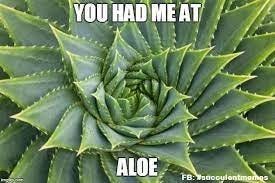
Agenda Today:
1) Expensive AF Shrubbery
2) Million Dollar Trees
3) Dude Who Does $15k A Month Selling Plants
4) How You Can Play the Game (or offset your expensive hobby like me)
First, have you been tracking the HYPER luxury market?


A $250,000 tree? Weird flex… but ok.
Apparently, mega-cars are so 2009 and now it’s about who has the boujeeiest of zen gardens. WSJ says there’s an entire lux market for finding old cool trees and buying them, then shipping them to mansions and hotels. Can you buy tree futures??
I experienced this trend first hand at my local nursery doing what apparently all us chicks do, buy some mfing succulents. I wanted this guy: The Staghorn Fern.
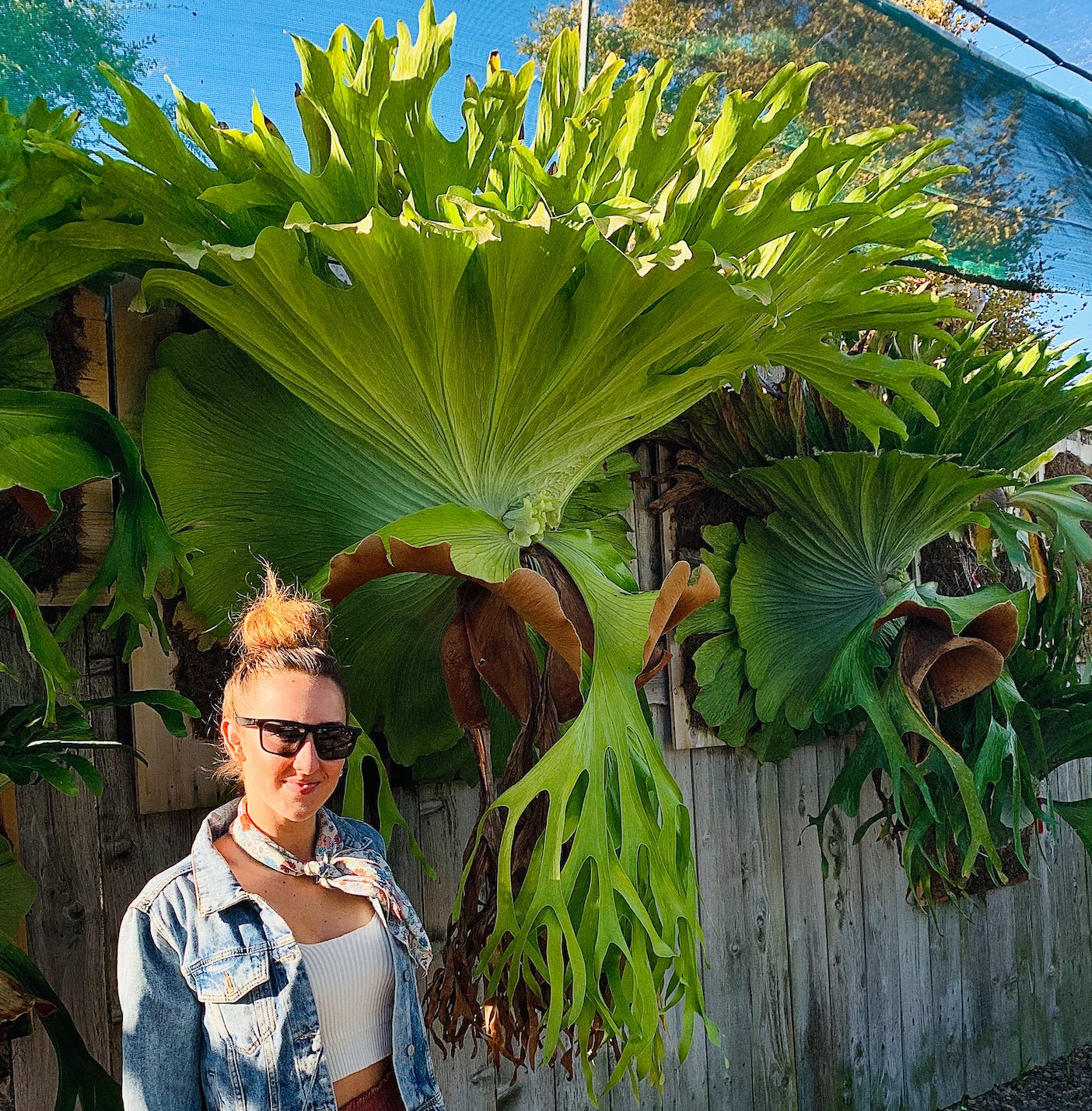
So I looked at the price tag… IT WAS $6,000 DOLLARS. LIKE U.S. DOLLARS. Like 3 ETH. WTF?
Turns out the Staghorn isn’t alone:
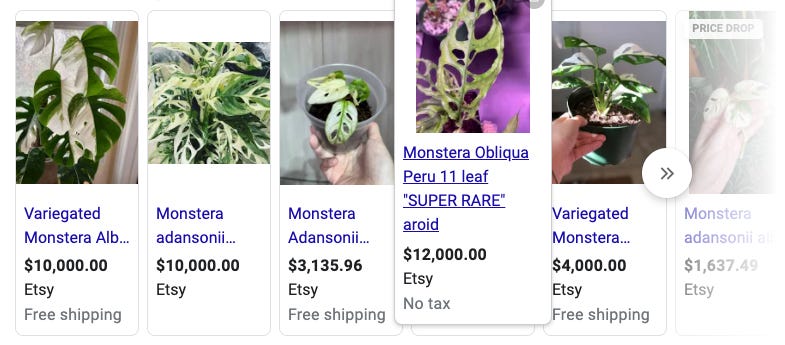
Thus – your lovely green newsletter today. Someone start a plant fund so I can invest and rationalize my spending patterns. Here’s everything you need to know to turn plants into profits. Let’s do this.
A New Global Green Obsession
Rewind a year and Marcus Kirby was a server at a Chicago Native Foods. Now? He’s the founder of The Succulent City, a houseplant store that’s raking in $15K a month (Love their IG).
In the past year alone, Google searches for indoor plants have skyrocketed and hashtags like #plantsofinstagram result in almost 10 million hits.
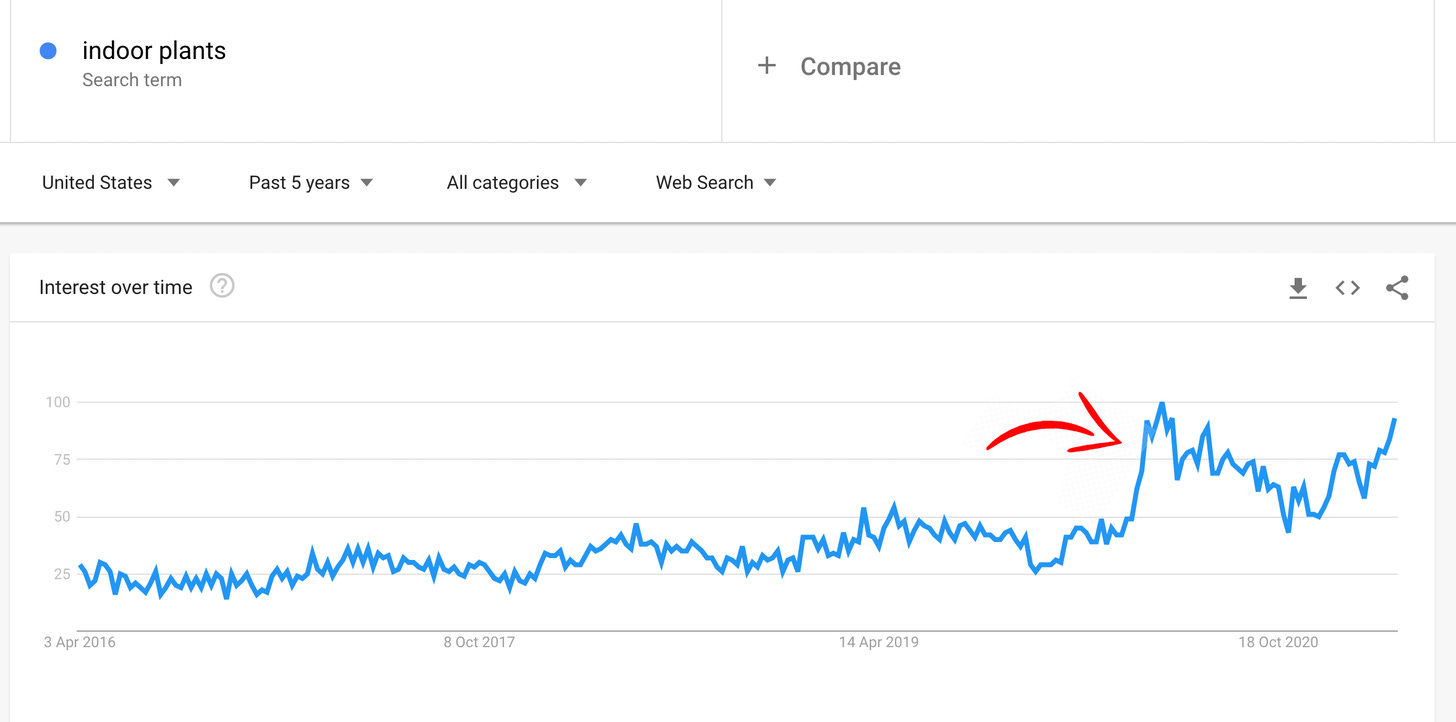
U.S. house plant sales have increased by 50 percent in the last 3 years, bringing collective spending value to a whopping $1.7 billion according to the National Gardening Association. While ‘plants’ and ‘gardening’ might bring up images of your elderly neighbor tending to tulips, millennials are actually the ones driving this new trend and they are going HARD.
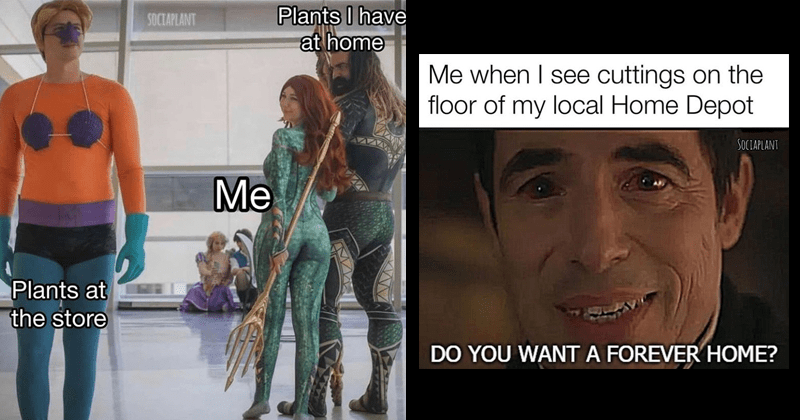
A lot of this can be attributed to Millennials and the generations after them deviating from their predecessors in a few pretty unique ways.
1. People are waiting to have kids or they just don’t want kids. So get a plant?
2. There’s a preference for renting over owning (“preference” might be sugar coating it, “priced-out” seems more accurate).
3. Access to nature isn’t easy or cheap. Pair that with pandemic restrictions turned on and off at whim and well.. hello Home Depot my camping locale.
4. People like owning pretty things. The only thing better than that? Low-cost, low-maintenance pretty things.
House plants answer all our modern-day woes: want to bring something to life without having your hair turn grey twice as fast? Buy a plant. Living in a stale, sunless basement suite with ugly walls your landlord won’t let you repaint? Buy a plant.

Everything will be fiiinee.
Goodbye Brick and Mortar, Hello D2C
Big-box stores like Lowe’s, Home Depot, and smaller garden nurseries once dominated. While these brick and mortar stores had the upper hand, they’ve been slow to adopt e-commerce trends and that’s exactly where the contrarians step in.
Demand for more direct-to-consumer retail options is booming.
The indoor plant market is projected to grow 66% by 2025 and is on track to becoming a multi-billion dollar industry. Startups like The Sill and Bloomscape, at $17M and $40M in ARR respectively are cashing. That’s also exactly how Kirby went from Native Foods to making big money with houseplants. If you see a need, fill it.
The Playbook: How to Profit off of Plants (the legal kind)
Step 1. Finding the right platform
The first step is making yourself (and your plants) visible. Kirby’s side hustle didn’t start out with its own dedicated website, he started off using Facebook Marketplace instead. For people looking for something low-maintenance (but at the cost of flexibility and full ownership of your brand) here are some of your best options:
Facebook Marketplace, Etsy: Don’t skimp on getting your images done right and do a little digging to make sure your price aligns with current marketplace values. Good descriptions and branding will always make the extra $$$ worth it to someone. Be unique AND specific in everything you can customize.
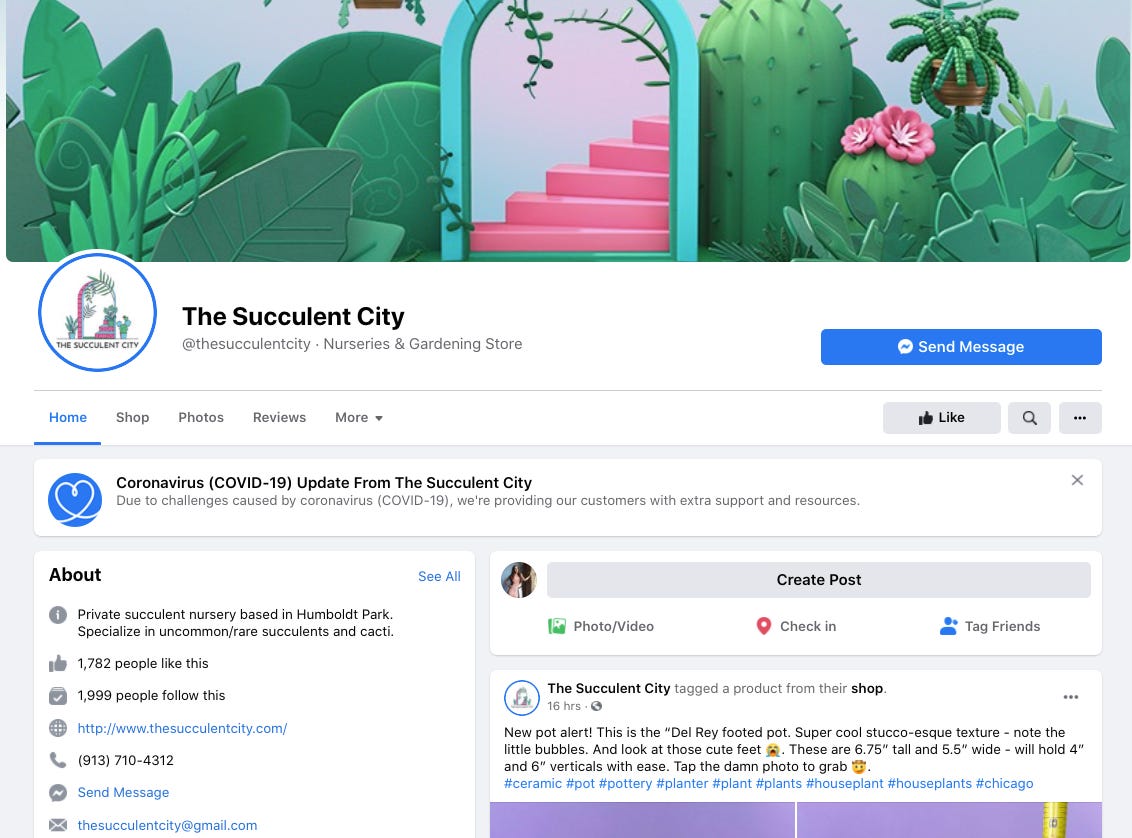
Craiglist & Amazon: Kirby says skip it. We agree. Better to go to Etsy or FB.
Website: Launch your own website and leverage Instagram and Facebook ads. In addition to its website, The Succulent City has 7K+ Instagram followers and 1K+ likes on their FB page. Small for their rev numbers.
Choice, choices, choices,
Not all houseplants are equal. The most popular are low maintenance which translates to low light and watering needs. Spider plants, fiddle leaf figs, pothos, snake plants, aloe vera, money tree, monster, and any kind of succulent.
But the times are constantly changing so hop on google trends and do your research:
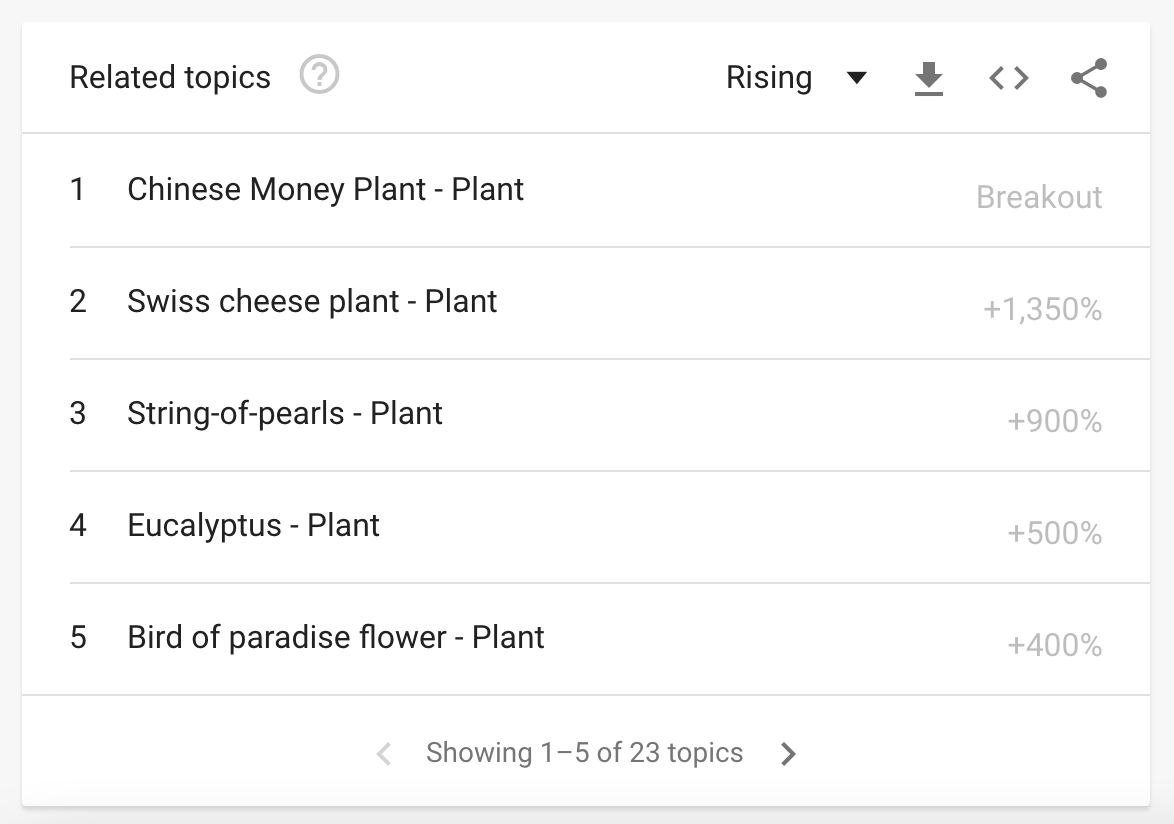
Hot tip: set yourself apart and justify a higher price easily by pairing your plants with a trademark planter box or arrangement style. Kirby also sells unique planters. This increases the margin by 100%.
Sourcing
Option 1: Grow em’ yourself. Buy your first batch directly from a nursery or start from seed and then save a portion to propagate and multiply your stock. No, you don’t need to be a plant whisperer to do this and there are plenty of tutorials out there.
Option 2: Buy in bulk directly from growers. They could be your local nursery providing you with full-grown plants every year or seedlings from a farm. Dropship plant selling anyone? All of Kirby’s plants come from local distributors, the same folks who supply plants to other plant stores in town. He just has a marketing markup.
*Hot tip* If you’re selling year-round, you’ll probably need more than one grower. The biggest thing to look for is consistent quality. Aka can the plants survive millennials.
Regulations
You need to understand what your shipping restrictions are as these can vary from state to state AND from plant to plant (another good reason to limit your product options). The United States Department of Agriculture (USDA) has a database you should definitely cross-check to see which of the plants you have your eye on are endangered or prohibited and in which state.
SHIPPING IS A B*TCH:
Do it Yourself
You’re going to need a few basic materials if you’re planning on handling the packing and shipping of yourself/through an employee.

FedEx knows what up: here’s their packing guide for plants
- Corrugated boxes, Lightweight pots, Potting soil (sterilized), Packing paper, Bubblewrap, Thick string/rubber bands, Waterproof bags
There’s no one-size-fits-all packaging but here are a few things to keep in mind:
- Plants need to breathe, you need air holes somewhere.
- Let the people handling your box know what’s inside – include a “handle with care”/”fragile”/”live plant” disclaimer on the outside.
- The waterproof bags? — that’s to keep the soil from spilling out
- Give them some cushioning in that extra box space and use wooden stakes around the pot for an extra layer of protection.
Want some foolproof package testing? Give your packed-up plant to a 5-year-old. HA.
Or Don’t
If this all seems like a lot of work, that’s because until you scale up to a point where you can outsource it, it will be.
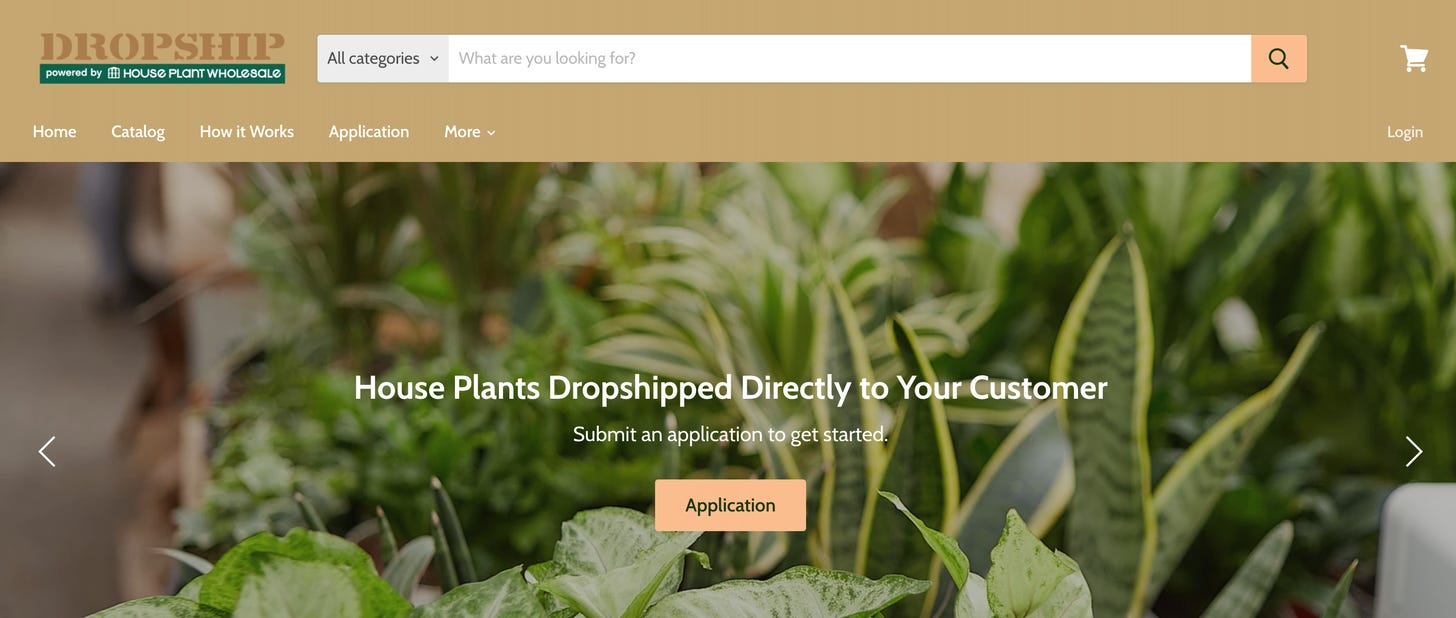
Your other option is to just outsource it from the get-go through drop shipping services or by partnering with your grower directly to arrange for shipping. Love this.
When Every Day is Black Friday
So it doesn’t matter if you’re stay-at-home parents looking for extra income or a serial entrepreneur, the good news is that there’s still plenty of room for disruption and for new hustles to emerge.
And now you’ve got the added advantage of getting started well ahead of the other players in the houseplant arena ;).
Hope you make a ton of green, also feel free to send plants. Some people like tacos, I’m into tulip bulbs.
Question everything and go green baby!
Codie & Rikki… Edited by: LJ (OMG WE HAVE A CONTRARIAN TEAM!)




